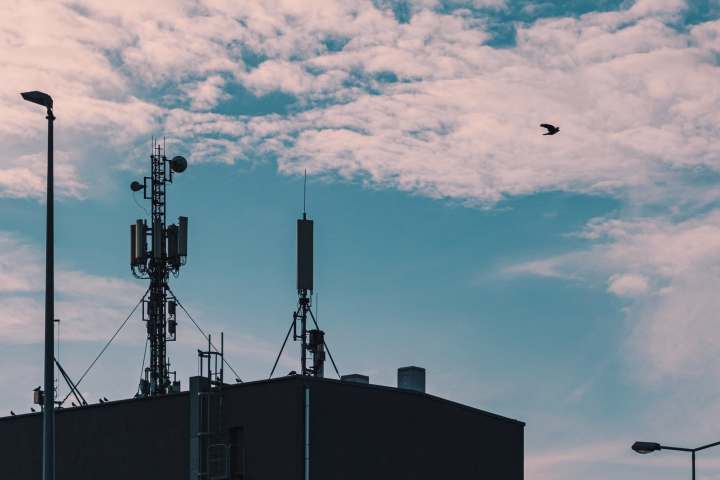There’s little doubt that 5G is starting to touch every area of our lives — from online classrooms to 5G-powered bots supplying medication to remote citizens. It’s no surprise then that 5G is also changing the way our newsrooms work.
Once widely available, 5G tools and the faster speeds they deliver will help journalists in at least three ways, professor John Pavlik of Rutgers University. First, he says, “5G can enable journalists working in the field to report more effectively from their digital devices, particularly with regard to high-bandwidth news gathering, such as photogrammetry, and other immersive applications for augmented reality and virtual reality (e.g., volumetric video capture), as well as high-resolution video from mobile devices.”
Second, 5G can enable news organizations to operate effectively without relying on a central, physical newsroom by supporting high-speed internet file sharing. Finally,
The best example of how 5G has made journalism more effective can be seen with the latest collaboration between The New York Times and Verizon. In 2019, the two companies came together to build a
Environmental photogrammetry
“Environmental photogrammetry involves taking thousands of still photographs and stitching them together as one large 3D model, giving readers the ability to immersively navigate the space as if they were actually there,” explains Sebastian Tomich, senior vice president and global head of advertising and marketing solutions for The New York Times.
This technology was first used in a 2020 story that toured the Los Angeles mansion where gamer conglomerate FaZe Clan lived and worked. “An article that employs environmental photogrammetry uses as much data as streaming an hourlong television show,” Marc Lavallee, head of research and development for the Times, said in a press release. “Making this kind of reading experience seamless for our readers requires cutting-edge networks like 5G.”
Beam and Eclipse

Talking about their first proprietary photography app, Beam, Tomich said it allows Times journalists working in the field to capture and automatically upload high-resolution images to the newsroom with nothing but their smartphone and camera.
Building upon the advances of Beam, the Eclipse app leverages Verizon 5G to expand video journalism. Eclipse can use
“This “always on” connection facilitated by Beam and Eclipse enables deeper coordination between the newsroom and photo and video journalists in the field,” he said. “With the ability to review footage in near real time, editors can now request additional photos or videos while the journalist is still on the scene.”
Real-life applications
These tools developed by the 5G lab aren’t just ideas inside four walls. The team has already started implementing them to improve the speed and quality of journalism.
For instance, when the team went to cover the 2020 Oscars red carpet arrivals, Verizon set up a 5G network at the event. Using Beam, a Times photographer roamed the red carpet freely, without interruption or regard for file transfer limits. “He ended up sending eight times more photos than the previous year’s photographer, with an average upload time of 2.1 seconds,” Tomich said. “With Beam, shooting IS filing.”
However, creating powerful tools isn’t always enough for effective real-world practices. Factors like awareness, availability, and access to resources play a huge role in shaping journalism. As newsrooms and 5G providers are waking up to the transformational power of 5G-powered, Pavlik suggests three ideas to better capitalize on the
He advises newsrooms to:
- Provide the budgetary support for reporters to purchase state-of-the-art smartphones and other mobile devices that support 5G technology and 5G connectivity.
- Train reporters to utilize the new tools available in a 5G environment (e.g., augmented reality, virtual reality).
- Evolve newsroom culture to support more remote work that can capitalize on 5G broadband mobile technology.
Drawbacks of 5G journalism

While 5G is certainly helping improve the effectiveness of newsrooms, it comes with its own set of problems. Not every newsroom has the funds to heavily invest in the three ideas suggested by Pavlik. Beyond money, time is also a factor. Newsrooms can’t always dedicate long hours to training journalists to use these fancy new tools.
Widespread availability of 5G is also still a huge issue across the US. “
Finally, some experts, like Victoria Mendoza, CEO of MediaPeanut (a tech-lifestyle digital community), also cite security issues with the increased use of 5G. “
At the end of the day, it’s just too soon to say which turn the world of 5G journalism will take. There’s definitely a lot of potential to explore tools and technologies to improve newsrooms, as long as the rising security issues are also effectively managed. As Rachel Chan, director of media strategy and engagement for Verizon, said: “This is just the beginning of what
Editors' Recommendations
- Visible’s affordable 5G plans just got even cheaper
- Have T-Mobile? Your 5G service is about to get much faster
- This tiny dongle will change 5G connectivity forever
- Verizon just took a huge leap ahead in the 5G race
- You can now get unlimited 5G for just $20 a month — with a twist



